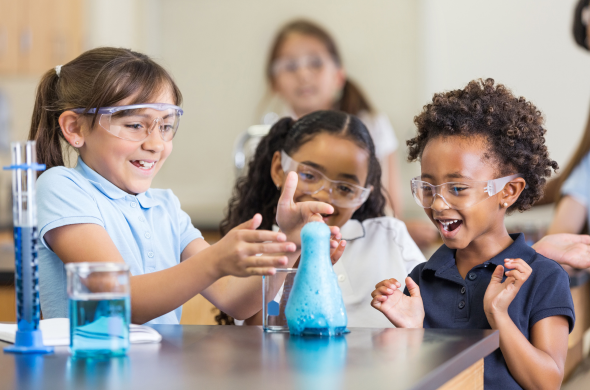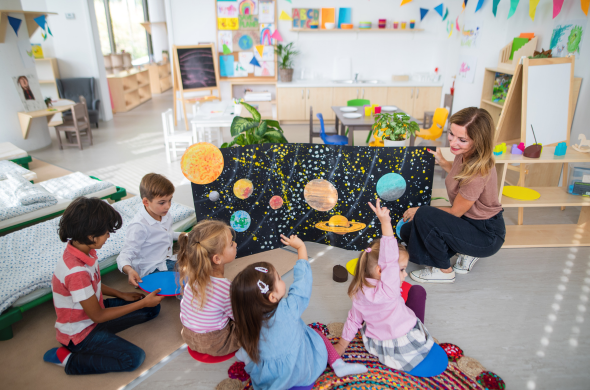Why Science Education Matters in Your Elementary School Classroom
Science is a critical part of elementary education. It’s not just facts and formulas — it’s a way to inspire wonder and curiosity in students as they learn about the world around them.
The most recent National Survey of Science and Mathematics Education published in 2018 found that elementary teachers taught science for just 18 minutes a day on average. Less than 20% of K-3 educators taught science more than twice a week.
But science plays a crucial role in early childhood! When you introduce a love for science early on, it can lead to lifelong benefits. Science instruction in elementary school can help students develop strong critical thinking skills, problem-solving, creativity, and curiosity! Science is important to children’s development, and it’s essential that educators make regular time for it in their routine.
Hands-on Experiments and Exploration
Many elementary students love science because it often involves fun hands-on activities. Children see the practical application of learning in real time when they are classifying animals, sprouting seeds, making observations, or experimenting with magnets. Science does better than almost any other subject at getting students interested, focused, and excited. Science comes alive in the classroom!
When students engage in hands-on experiments, they are in the mindset to explore. They are more likely to ask questions, investigate independently, and actively participate in their learning.
Studies Weekly’s Explore Science curriculum creates these opportunities for students and allows them to drive their own learning through inquiry. The activities and experiments in each unit engage students and spark their curiosity.
You can also purchase materials kits that contain items called for in the curriculum to make it easy to implement hands-on activities in your instruction time.

Teach Science Concurrently with Other Disciplines
Granted, it can be challenging to make enough time for so many areas of instruction – especially at a time when the National Assessment for Educational Progress reports that two-thirds of students cannot read at a proficient level. Thus, many educators cut their science blocks back to make more time for reading and writing.
However, science incorporates elements of reading, math, social studies, and more, making it an excellent tool for teaching other subjects concurrently. These cross-curricular connections can reinforce and support students’ learning of other disciplines while still giving them the exciting, eye-opening moments that come with learning science.
Studies Weekly’s Science curriculum is aligned with state science standards and includes extensive non-fiction and informational text practice to support ELA, making it an excellent tool for teaching science and literacy together.

Building a Foundation for Future STEM Success
These are only a few of the many benefits to making time for science education in your elementary school classroom. Science keeps students engaged and active in their learning and encourages them to always ask questions. It is critical to help your young students build a foundation in science and spark their excitement about being lifelong science learners.
The problem-solving, creative thinking, and exploratory skills that begin in elementary school can be critical assets to students. A solid science foundation will help them be better prepared for more challenging disciplines they will eventually encounter, like chemistry, physics, and biology.
Children today are the future’s scientists and innovators! Help inspire them to pursue more education and careers in STEM by nurturing their love for science now.
